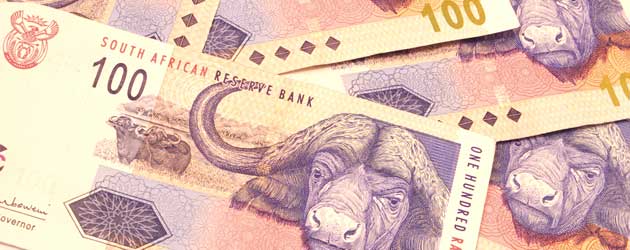 Russian Ruble (RUB) Exchange Rate Forecast
Russian Ruble (RUB) Exchange Rate Forecast
On Monday Russia’s Ruble plummeted against a basket of Dollars and Euros, shedding 0.8% and coming within touching distance of the level at which the Russian central bank has said it would take intervention measures.
The Ruble has been the world’s worst performing currency in the third quarter (largely due to the tensions with Ukraine) and the Russian central bank asserted that it would start purchasing Rubles in order to prevent further depreciation once the currency slumped to 44.40. Yesterday the currency brushed 44.24.
According to economist Dmitry Polevoy; ‘The market is getting closer to panic. The ‘ghost’ of peak external debt payments in September and December is the most often-cited enemy of the Ruble. The attempt to test 44.40 look well grounded.’
While the strength of the US Dollar and ongoing sanctions against Russia are likely to keep the Ruble under pressure in the short to medium term, there are several Russian reports which could have an impact on the RUB exchange rate over the next few days.
Economists will be taking a particular interest in tomorrow’s HSBC Manufacturing PMI – which is believed to have risen from 51.0 to 51.2 – and Friday’s Services PMI, forecast to have fallen to 48,9 in September from 50.3. Friday is also the day on which Russia will release its inflation report, an influential ecostat with the potential to inspire Ruble (RUB) exchange rate movement.
South African Rand (ZAR) Exchange Rate Forecast
At the start of the week the South African Rand (ZAR) slumped to a fresh 8-month low against a bullish US Dollar.
Last week’s positively revised US second quarter growth data continues to drive demand for the ‘Greenback’ and the USD/ZAR exchange rate was able to trade strongly even as US Pending Home Sales were shown to have fallen unexpectedly.
Economists had forecast a pending home sales increase of 2.0% but they actually dropped by -4.1% on the year in August.
However, other US reports (including the nation’s Personal Consumption and Personal Expenditure figures) either met or exceeded expectations.
When speaking of the USD/ZAR exchange rate, locally-based analyst John Cairns noted; ‘The trend remains upwards on Dollar/Rand and sideways on the crosses as the great dollar rally of 2014 drives everything before it’.
Before the publication of the UK’s Consumer Confidence index, the Pound Sterling to South African Rand (GBP/ZAR) exchange rate was also trending in a stronger position, achieving a high of 18.3608.
Later today South Africa will release its Private Sector Credit and Balance of Trade reports. Concerns that South Africa’s deficit is widening have weighed on the Rand in recent days. If the nation’s deficit is shown to have increase in August, the Rand could soften against both the Pound (GBP/ZAR) and US Dollar (USD/ZAR).
As the week progresses, other South African reports to be aware of include Wednesday’s KASIGO Manufacturing PMI, and the nation’s Consumer Confidence Index, due out on Friday.
Of course, volatility in the Pound to Rand and US Dollar to Rand exchange rates could also be caused by UK and US figures.
Economists have forecast that both the Russian Ruble (RUB) and South African Rand (ZAR) exchange rates will continue to struggle in the days ahead.

